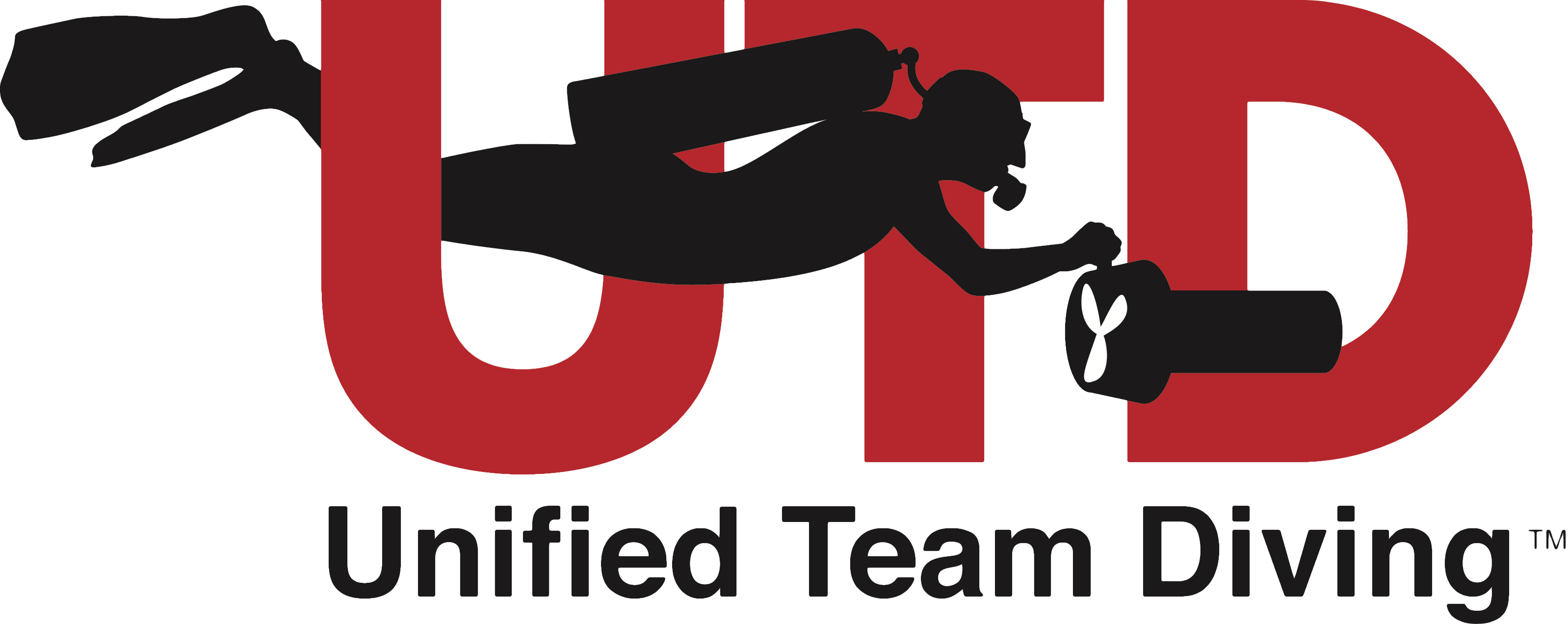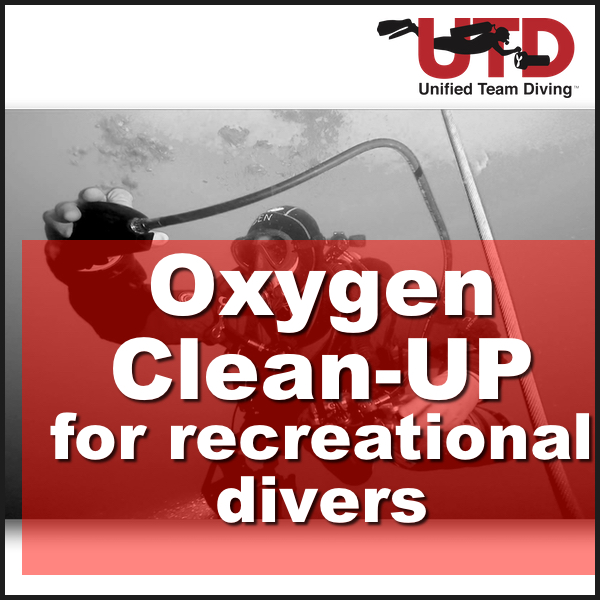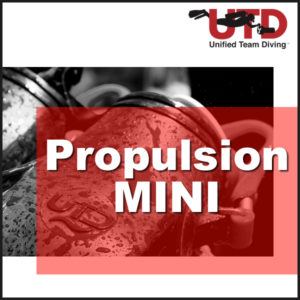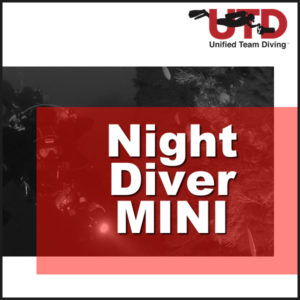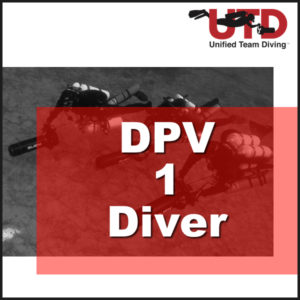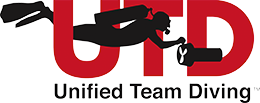Description
Oxygen clean-up for Recreational divers
What is the goal?
The UTD Oxygen Clean-Up course trains a recreational diver to switch to oxygen as a clean-up gas at the end of a min-deco ascent. Recreational dives to the limit are thought of and generalized as NO-DECOMPRESSION LIMIT dives. That’s the jargon. However, every dive below 9m/30ft is a decompression dive. In our UTD jargon, we talk about MDL (Minimum Decompression Limit) instead of the industry-wide NDL (No Decompression Limit). By implementing our slow ascent where we reduce the ascent rate from 10m/30ft per minute to 3m/10ft per minute at 50% of our depth on the ascent we have already greatly reduced the decompression stress on the slower tissues in our bodies. Adding oxygen at the end of an ascent profile can reduce that stress even more.
Who is it for?
This course is designed for the UTD Rec 2 or Rec 3 diver (or equivalent Advanced with Nitrox) who wants to get the benefit from oxygen after the final stops of their recreational dive have been completed. Doing a 30m / 100ft dive to the limits – let’s say 20min using air or 30min using Nitrox 32 – is in some way riskier and more stressful on your body than a technical dive where we count on and plan for decompression.
Multiple factors can play a role in the total decompression stress on you as a diver. These are, just to name a few:
- Cold
- Age
- Exhaustion
- Dehydration
- Repetitive Dives
- Multi-Day dive events
So if you want to be sure you are reducing the decompression stress on your body as much as possible consider enrolling in our Oxygen Clean Up course for recreational divers. Here you will learn the techniques and skills needed to safely use oxygen on your recreational dives without taking a full-blown tech course.
How long does it take?*
The UTD Oxygen Clean-Up course does not take more than 2 days, day 1 is all about developing some personal skills when it comes to gas switching and s-drills. Day 2 is about some practical applications and experience dives.
What equipment do I need?
Apart from your standard UTD scuba equipment, you need an oxygen decompression cylinder. We suggest an oxygen-clean 40cf aluminum cylinder with an oxygen-clean regulator set. consisting of a DIN first stage with a second stage on a 3ft, 100cm hose, and an SPG on a short hose. Contact your instructor before purchasing your equipment.
What can I do after?
You will be able to, as the name implies, clean up your tissues after a recreational dive using oxygen at 20ft or 6m. NOTE this is not intended as planned decompression, you will still have to stick to the NDL/MDL limits of your certification.
How do I get started?
Step 1: Purchase these online materials. These materials will be yours for life. Also, any future updates to these materials will automatically be updated so you can stay current with the latest knowledge. During the buying process, you will be guided through a registration waiver. Here you can choose your instructor. After the waiver has been completed your instructor will also be notified
Step 2: Reach out to your instructor and schedule the class
Step 3: Get going with the online materials and supplemental materials you might receive.
Step 4: Spread the word you are taking this class, and start building your UNIFIED DIVING TEAM.
The costs and pricing structure for UTD courses is almost always built up in 3 sections
1:The price for the course materials you buy directly at the UTD website.
2: The price for the in-person instruction from your instructor
3: Local fees or diving expenses. These could be entry fees, pool rental, equipment rental, etc. inquire with your instructor for details about this. If this course requires the instructor to travel to or with you, the students share the traveling costs of the instructor.
*The course duration is determined by a baseline of the abilities of the average students and coupled with what we need to comfortably introduce the skills and go over the theory content.
However, when you buy a UTD course from one of our instructors, you pay for training not for a “plastic reward for participation”. We will give you the ability to look at your strengths and weaknesses, and during the class, we can expand on your strengths and improve on your weaknesses.
Scuba Diving is highly skills-based and theory-based, throw in some complex equipment and you get a mixture of many aspects to master. You should be comfortable with all three aspects to get the most out of your diving and be safe. All of us learn at different paces. It is therefore almost impossible to give everybody the same timeframe to master the complete curriculum.
Some students might need more coaching or just more time to master certain aspects of the course. You can always do so by seeking out more training outside the curriculum and the time constraints of the standard course layout. You can find the price for extra training with your instructor.
If you together with your instructor decide that more training is needed, we have a document called “Path to completion” It will give you a clear path to reach your goal. That can be a beginner taking the first scuba class, or the advanced diver moving into technical diving. All will succeed…at their own pace.
